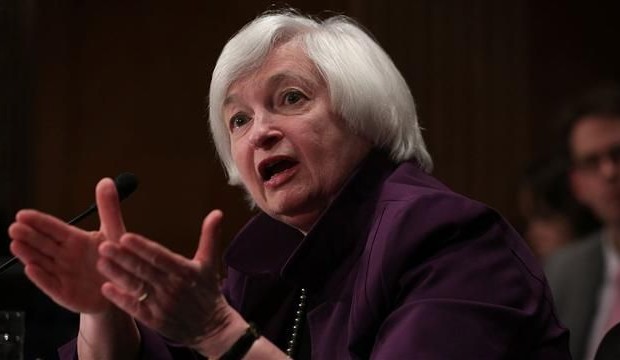September Hike
by Guy Haselmann, Director, Capital Markets Strategy, Scotiabank GBM
• Hold onto your bootstraps. Markets are setting themselves up for a surprise as the Fed is still likely to hike rates in September. Today’s ‘risk-on’ move is a function of those expecting delay. Rising levels of market volatility are here to stay and will be magnified by this ‘surprise’. Those ignoring the warnings of a rate hike by Fed officials do so at their own peril.
• Many FOMC members have said that they expect “bumpiness” when they raise rates for the first time in nine years. They probably believe recent market volatility is partially explained by the fact that the September FOMC meeting is approaching and some investors were preparing themselves.
• The Fed has adequately prepared the market for a hike. Delaying the hike once again would cause harm to financial markets. It would not be healthy to price out a hike completely, only to have to price it in again at a later date. Confidence would be damaged.
• Moreover, I do not believe the Fed will opt to wait until the December meeting, because it would cause year-end balance sheet and liquidity issues that it would prefer to avoid. Waiting until 2016, also has its draw-backs, due to over $200 billion in Treasury securities set to mature. ‘One and done’ is more of a possibility to me than a delay.
• The Chinese slowdown and troubles in emerging market countries is unlikely to prevent a hike because those countries are taking their own set of actions to confront their respective challenges. As the owner of the world’s reserve currency, the Fed must show leadership and be the first major central bank to move.
• Unfortunately, this morning’s euphoria in US markets was partially due to the combination of many economists pushing out their expectations of the first rate hike until 2016 (some believe 2017), and partially due to China cutting rates. If they are correct, then financial conditions must deteriorate materially.
• Therefore, today’s euphoria may be misplaced at this point in the cycle. Over-dependence on exceedingly accommodative monetary policy is one of the reasons financial markets conditions are in the position they are in today. This will be a point of discussion at the September FOMC meeting.
• Guidance on ‘lift-off’ has moved so many times over the past several years that there are many investors who believe that the Fed will not be hiking for many years. For many investors the motto ‘I will believe it when I see it’ is the reason why many investors ‘buy the dip’ and why weak economic data sends equity markets soaring (it has meant more Fed). Central banks need to break the cycle of markets rising due to expectations of continuous stimulus. FOMC members are aware of this and seem prepared to end this unhealthy cycle.
• Those buying over-priced equities today must believe that the Fed will not hike in 2015 and/or believe that QE4 is an option if needed. Both could be a much higher hurdle then many realize. If I am correct, too many are over-estimating the upside in equities and under-estimating the downside. It is time to pare risk, own long bonds, raise cash, and seek quality securities.
• Those calling for delaying a hike have become more vocal. Many cite the drop in inflation break-even spreads as an indication that the Fed is failing on its inflation mandate. Inflationary expectations have fallen back to levels comparable to when the Fed implemented past QE programs. This partially explains why some started calling for QE4 yesterday. (As I stated yesterday, the chance are minuscule)
• However, simple comparisons are not so straight-forward. FOMC conversations focusing on inflationary expectations are very different today than they were a few years ago. In prior notes, I argued why the Fed’s zero interest rate policy might even be counter-productive to its dual mandates.
• Regardless, monetary policy cannot restrict itself to reacting to short term inflation fluctuations. Policy must promote the more important goal of economic growth, which requires financial stability. Without financial stability, the Fed’s chances of achieving its dual mandates are small.
• Seven years of extraordinary monetary accommodation has led to a misallocation of resources. One only has to ask where the funds are being deployed from the annual $1 trillion+ in corporate bond issuance since 2009 to see those risks. The ramifications are immeasurable and will be unknown for many years.
• Stanley Fischer is unflappable. He will be a steady voice, unmoved by the market’s gyrations. He will cite near full-employment and the fact that 246,000 jobs per month have been created during the past year. He fully understands the psychology of the marketplace and the damage that could be caused by letting market volatility derail their plans for a hike and retreat from the emergency rate of zero.
• Mr. Fischer and other FOMC members are meeting in Jackson Hole Wyoming this week. Comments from the conference could easily be consistent with prior Fed messages that a September lift-off seems reasonable. If this occurs, today’s market Euphoria will wither and reverse. As the market re-introduces the pre-meeting potential of a hike - or experiences an actual September 17th hike - the 30 year Treasury will regain its legs, while equities and credit securities resumes their sell-off.
“It’s a hard rain’s a-gonna fall” – Bob Dylan
Regards,
Guy
Guy Haselmann | Capital Markets Strategy
▬▬▬▬▬▬▬▬▬▬▬▬▬▬▬▬▬▬▬▬▬▬▬▬▬▬▬
Scotiabank | Global Banking and Markets
250 Vesey Street | New York, NY 10281
T-212.225.6686 | C-917-325-5816
guy.haselmann[at]scotiabank.com
Scotiabank is a business name used by The Bank of Nova Scotia















